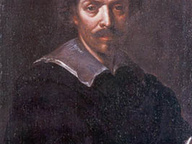Giorgio Morandi. A family history

Giorgio Morandi. Una storia di famiglia
From 20 December 2018 to 16 February 2019
Bologna
Place: Galleria d'Arte Maggiore g.a.m.
Address: va D'Azeglio 15
Telefono per informazioni: +39 051 235843
E-Mail info: info@maggioregam.com
Official site: http://www.maggioregam.com
As the end of 2018 approaches, Galleria d'Arte Maggiore g.a.m. has saved for last the major exhibition of its designed plan to celebrate its first forty years of activity. For this important goal, the gallery director Alessia Calarota curates a considerable Giorgio Morandi retrospective in the historical location of the gallery. Giorgio Morandi was immediately followed and supported with great attention by the founders Franco and Roberta Calarota. He is the painter who better embodies the promotion of the major artists from the XX century carried on by the gallery worldwide. The exhibition features a selected group of oils, watercolors, drawings and etchings from the famous still lives to the refined vases of flowers and the solitary landscapes. They reveal all the quiet but deep pictorial innovation of Morandi between reality and abstraction as well as his influence in the vision of the more contemporary generations of artists. The exhibition shall be accompanied by a volume, retracing the everlasting bond between the artist and the gallery.
«The fundamental man of today Italian art, a required step». This is how Francesco Arcangeli defined Giorgio Morandi in 1961, words that fit in perfectly today as well thanks to the constant increase of interest in the artist at an international level, both from the most refined and careful collectionism and critics, curators and well known artists. The exhibition at Galleria d'Arte Maggiore g.a.m. starts from the artist hometown, Bologna, and wants to give a full portrait of him, a window overlooking his domestic and intimate world, but always capable of broadening to a more universal story. His works have to be seen again and again in order to always find new splendour, as Umberto Eco wrote while telling about when he first met Morandi at Pinacoteca Civica di Alessandria when he was a high school student: «And among those paintings, there was a piece of Morandi. It was a revelation for me, an epiphany. For fifteen days, until the exibithion closed, I was there every afternoon, every day just to see the Morandi again and again. (...) About that faraway experience, I keep a memory, maybe the most intense one: what would surprise and attract me during those visits was the fact that each day that painting would look different to me». A variability even more surprising as it is related to the extreme scarcity of themes, to few and simple objects surrounded by an atmosphere suspended in time and space, in quietness and meditation. An ongoing dialogue between light, shape and colour develops underneath the surface of the figure and beyond the represented subject which emptied its original meaning out to embrace a new one, with a pictorial vocabulary ruled by light. «We can say that it is an art where nothing happens by chance», it is what is said about a Morandi still life in a scene of the movie La dolce vita: maybe it is exactly this feeling of non chance and unavoidable suspension of the subjects that never makes Morandi's art an end in itself and always in dialogue with the public's eye.
This retrospective is the last chapter of a long history of exhibitions by Galleria d'Arte Maggiore g.a.m. about the artist, both in its historical location in Bologna and in its latest opening in Milan where an exhibition about Morandi's etchings has just closed. Monographic exhibitions rotated with dialogues, both with old masters such as the exhibition "Giorgio Morandi. Giorgio de Chirico. Poesia e mistero si incontrano", and more contemporary artists such as Ettore Spalletti, Tong Yanrunan and Robert Ryman in an exhibition organized in Los Angeles. Many collaborations have been achieved with prestigious institutions both in Italy and abroad: from the Musée d'Art Moderne de la Ville de Paris, through the Estorick Collection of Modern Italian Art of London, to Museo di Palazzo Fortuny in Venice, just to mention a few of them.
«The fundamental man of today Italian art, a required step». This is how Francesco Arcangeli defined Giorgio Morandi in 1961, words that fit in perfectly today as well thanks to the constant increase of interest in the artist at an international level, both from the most refined and careful collectionism and critics, curators and well known artists. The exhibition at Galleria d'Arte Maggiore g.a.m. starts from the artist hometown, Bologna, and wants to give a full portrait of him, a window overlooking his domestic and intimate world, but always capable of broadening to a more universal story. His works have to be seen again and again in order to always find new splendour, as Umberto Eco wrote while telling about when he first met Morandi at Pinacoteca Civica di Alessandria when he was a high school student: «And among those paintings, there was a piece of Morandi. It was a revelation for me, an epiphany. For fifteen days, until the exibithion closed, I was there every afternoon, every day just to see the Morandi again and again. (...) About that faraway experience, I keep a memory, maybe the most intense one: what would surprise and attract me during those visits was the fact that each day that painting would look different to me». A variability even more surprising as it is related to the extreme scarcity of themes, to few and simple objects surrounded by an atmosphere suspended in time and space, in quietness and meditation. An ongoing dialogue between light, shape and colour develops underneath the surface of the figure and beyond the represented subject which emptied its original meaning out to embrace a new one, with a pictorial vocabulary ruled by light. «We can say that it is an art where nothing happens by chance», it is what is said about a Morandi still life in a scene of the movie La dolce vita: maybe it is exactly this feeling of non chance and unavoidable suspension of the subjects that never makes Morandi's art an end in itself and always in dialogue with the public's eye.
This retrospective is the last chapter of a long history of exhibitions by Galleria d'Arte Maggiore g.a.m. about the artist, both in its historical location in Bologna and in its latest opening in Milan where an exhibition about Morandi's etchings has just closed. Monographic exhibitions rotated with dialogues, both with old masters such as the exhibition "Giorgio Morandi. Giorgio de Chirico. Poesia e mistero si incontrano", and more contemporary artists such as Ettore Spalletti, Tong Yanrunan and Robert Ryman in an exhibition organized in Los Angeles. Many collaborations have been achieved with prestigious institutions both in Italy and abroad: from the Musée d'Art Moderne de la Ville de Paris, through the Estorick Collection of Modern Italian Art of London, to Museo di Palazzo Fortuny in Venice, just to mention a few of them.
SCARICA IL COMUNICATO IN PDF
COMMENTI

-
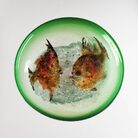 Dal 12 July 2025 al 24 November 2025
Venezia | Museo del Vetro
Dal 12 July 2025 al 24 November 2025
Venezia | Museo del Vetro
-
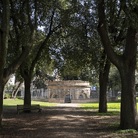 Dal 11 July 2025 al 21 September 2025
Roma | Loggia dei Vini - Villa Borghese
Dal 11 July 2025 al 21 September 2025
Roma | Loggia dei Vini - Villa Borghese
-
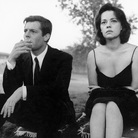 Dal 10 July 2025 al 10 August 2025
Roma | Palazzo Esposizioni Roma
Dal 10 July 2025 al 10 August 2025
Roma | Palazzo Esposizioni Roma
-
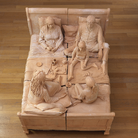 Dal 10 July 2025 al 3 November 2025
Casale Marittimo | Bolgheri, Castagneto Carducci, Casale Marittimo
Dal 10 July 2025 al 3 November 2025
Casale Marittimo | Bolgheri, Castagneto Carducci, Casale Marittimo
-
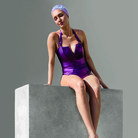 Dal 4 July 2025 al 21 September 2025
Roma | Palazzo Bonaparte
Dal 4 July 2025 al 21 September 2025
Roma | Palazzo Bonaparte
-
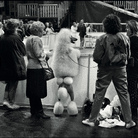 Dal 28 June 2025 al 21 September 2025
Roma | Palazzo Bonaparte
Dal 28 June 2025 al 21 September 2025
Roma | Palazzo Bonaparte
